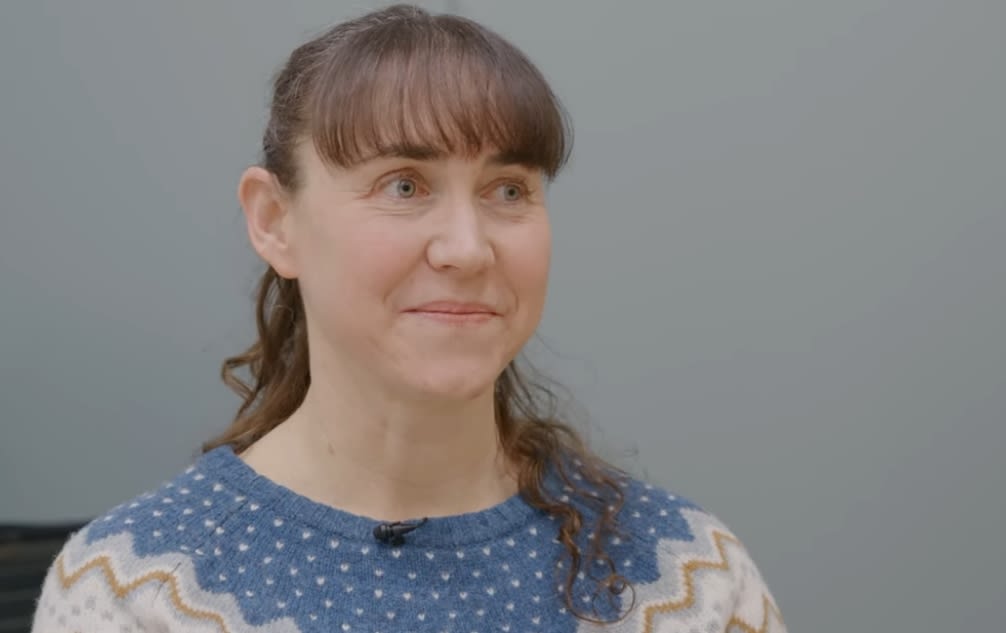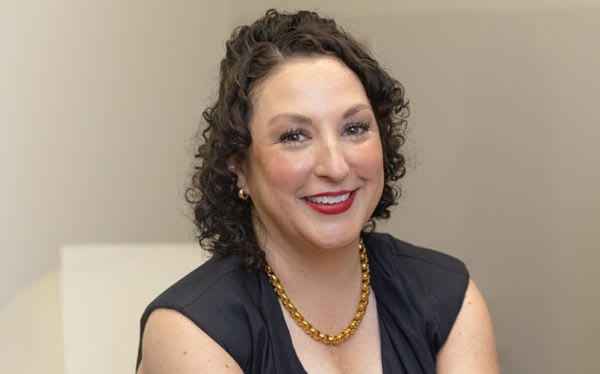Stereotactic Radiosurgery (SRS)
High-Dose Radiation with Pinpoint Precision
At the Providence Swedish Cancer Institute, we know less invasive treatment can mean more peace of mind. Radiosurgery delivers precise, high-dose radiation to target tumors, including those in sensitive or hard-to-reach areas, without incisions or long recovery times. It's leading-edge care designed to help you get back to what matters faster and with fewer disruptions to your life.

Treatment Overview
Radiosurgery is an advanced, noninvasive treatment that uses focused beams of radiation to accurately target tumors. Despite its name, radiosurgery isn’t actually surgery - there are no incisions, no hospital stays, and no long recovery times. Instead, it delivers high doses of radiation to destroy cancer cells, often in just one to five sessions. This precise approach spares healthy tissue, helping reduce side effects and improve outcomes.
When this approach is used in the brain or spine, it’s called stereotactic radiosurgery (SRS). When the same technique is applied to tumors elsewhere in the body, it’s called stereotactic body radiation therapy (SBRT). Both are advanced forms of radiosurgery that represent the next evolution in radiotherapy, offering precise, effective treatment with fewer sessions and often fewer side effects.
At the Providence Swedish Cancer Institute, we use the latest radiosurgery technologies - CyberKnife® S7 and Gamma Knife® - to treat tumors in sensitive or hard-to-reach areas. CyberKnife is used to treat a variety of cancers, including those in the spine, lungs, and prostate, with sub-millimeter precision. Gamma Knife is specifically designed for treating brain tumors and uses a specialized head frame to keep you completely still during treatment, helping protect nearby healthy tissue. As the only center in the Pacific Northwest offering both systems, we're able to deliver personalized, leading-edge care for patients who aren't candidates for traditional surgery or who need a less invasive option.
What to Expect
Your care plan is developed by a collaborative team of cancer specialists, including your radiation oncologist, surgeon, medical oncologist, and other experts, who work together to recommend the best treatment for your unique needs. And throughout your care, our radiosurgery experts are here to support you - from your first appointment through recovery. Here's what to expect from your radiosurgery treatment.
Before radiosurgery, you meet with your care team to create your treatment plan. This may include imaging, like CT or MRI scans, to map the exact location of your tumor(s). You may also be fitted with a custom thermoplastic mask or head frame if you’re receiving treatment for a brain or head-and-neck tumor, or a body support device if your treatment targets other areas of your body. Our team explains each step, answers questions, and helps you feel prepared and comfortable before your first session.
During radiosurgery, you lie comfortably on a treatment couch as a machine delivers high-dose, targeted radiation to your tumor. The procedure is painless, typically lasts 30 to 90 minutes, and there are no incisions. Most patients go home the same day.
After treatment, you may feel tired or have headaches or swelling in the treatment area, but these side effects are usually temporary. If you have any concerns or need support with side effects, your care team is just a phone call away.
Radiosurgery is a noninvasive way to treat tumors with high precision, often reducing the need for traditional surgery. It can reach hard-to-treat areas while sparing healthy tissue, to help minimize the side effects that you may experience.
Potential risks may include short-term effects such as fatigue, swelling, headaches or scalp and hair changes, depending on the area treated. Long-term risks, such as memory changes, are minimized with stereotactic radiosurgery (SRS) because it targets precise areas rather than wide sections of the brain.
Many patients benefit from supportive care services both during and after treatment. Our cancer rehabilitation program, led by a fellowship trained specialist, is one of the few programs nationwide to offer dedicated cancer rehabilitation. Depending on your needs, this might include physical or occupational therapy, speech therapy, or nutrition support.
We also offer holistic services like massage, acupuncture, art and music therapy, meditation, and nutrition classes.
Explore all our supportive care services.
CyberKnife for Prostate Cancer
The CyberKnife system uniquely compensates for prostate movement. The prostate gland can move unpredictably through the course of treatment, making the ability to detect and correct for motion critically important.
With CyberKnife, we can deliver high doses of radiation while protecting surrounding healthy areas of the body. High doses have been proven to be necessary for prostate cancer control, and the CyberKnife is ideal for this type of delivery with unmatched precision.
Learn more about the advantages of CyberKnife treatment for prostate cancer. Call 206-320-7130 or complete the form.

CyberKnife Treatment Resources
Frequently Asked Questions
During radiosurgery, you’ll lie comfortably on a treatment couch in a carefully supported position while a machine delivers high-dose, targeted radiation to your tumor. For Gamma Knife treatment, you may wear a head frame or mask to keep you still during the procedure. CyberKnife treatment for the head or neck area may also involve the use of a mesh mask.
Procedures are painless and typically last 30 to 90 minutes, depending on the treatment area. There are no incisions, and most patients go home the same day. Your care team monitors you closely throughout the session to ensure you’re comfortable and answers any questions you may have.
The number of sessions you need depends on your personalized care plan. Some patients may need just one session; others may need up to five, depending on the size and location of the tumor. These treatments are usually completed over the course of a few days to a week. Your doctor walks you through the number of sessions recommended for your specific case.
Most patients only experience mild side effects after radiosurgery. These may include fatigue, headaches, scalp or hair changes, or swelling in the treatment area. These side effects are typically temporary and go away within a few days. Your care team provides guidance on managing symptoms and follows up regularly to make sure you’re recovering well.
No, you will not be radioactive after radiosurgery. The radiation is delivered precisely to the treatment area during your session and does not stay in your body afterward. You can safely be around family, friends, and loved ones, including children and pregnant people, after your treatment.
Yes, follow-up care is an important part of your treatment. You will get imaging scans to track how well the treatment is working and regular check-ins with your doctor. Your team also provides ongoing support to help you manage any symptoms and adjust to life after treatment.
Yes, radiosurgery is often part of a comprehensive cancer treatment plan. It may be combined with surgery, chemotherapy, immunotherapy, or other therapies to achieve the best outcome. Your care team — including your radiation oncologist, surgeon, medical oncologist, and other specialists — works closely together to design the most effective combination of treatments for your specific cancer. They’ll guide you through each step of your plan, so you know exactly how your treatments work together.
Hair loss from radiosurgery is typically minimal. Even then, it’s usually limited to a small patch near where the radiation is delivered. Your care team can discuss if hair loss is a possibility based on your treatment plan and provide guidance on managing any changes to help you feel more comfortable.
Yes, most patients can return to their usual activities shortly after radiosurgery. Since there are no incisions or hospital stays, recovery time is minimal. You may feel tired for a day or two, but your care team provides advice on when it’s safe to go back to work, start exercising again, or resume your other daily activities.
News & Info From Our Experts



